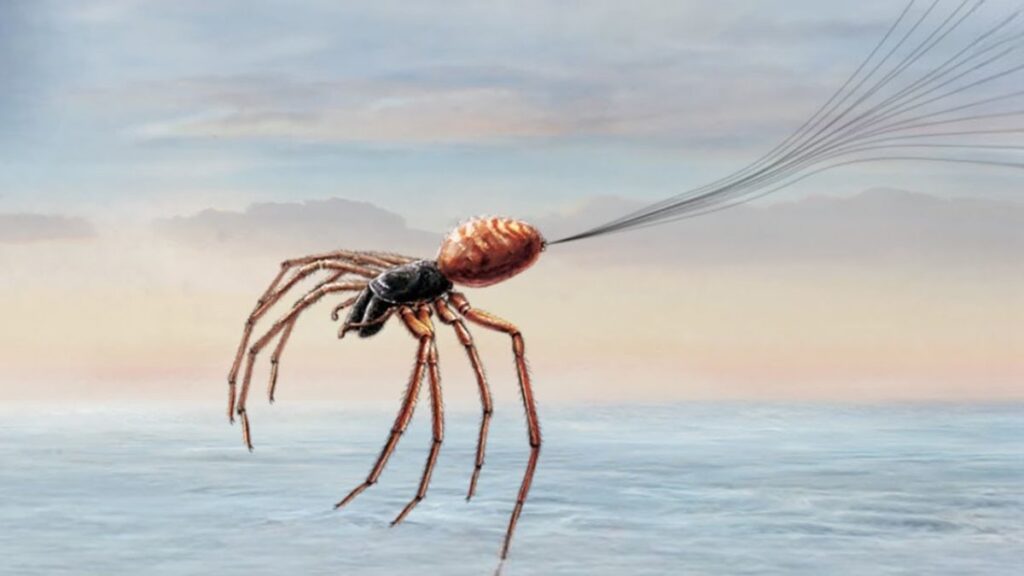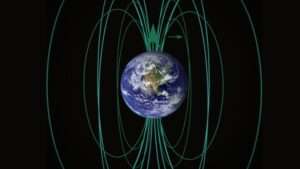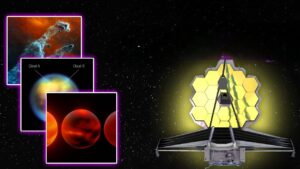
During stormy days, humans become aware of the Earth’s electrical field as lightning flashes between the positively charged sky and negatively charged Earth. Spiders, on the other hand, possess a sophisticated sense of atmospheric electricity and use it to fly through a process called “ballooning.” In this process, a spider climbs to a high point, spins a charged silken line, and takes flight through the repulsion of the silk, which provides lift. Despite the conventional belief that spiders used wind to travel, this was discredited when they were observed to balloon even during light winds, when their silk was unlikely to be yanked out. Charles Darwin first observed this mystery in the early 1800s when he saw tiny red spiders covering the deck of the HMS Beagle 60 miles offshore.
A recent study from the University of Bristol sheds light on the riddle of spider flying. Bristol researchers discovered that spiders can detect the Earth’s electric field and utilize it to propel themselves into the air. They proved in a confined container with no air currents that when an electric field is present, spiders take off and return to the ground when the electric field is removed. Trichobothria, or small hairs on spiders, respond to electric fields in the same way as human hairs do to static electricity, allowing the spiders to perceive the field. The University of Bristol scientists discovered that spiders may move hundreds of kilometers by riding on the electrostatic repulsion of their silk.
Past beliefs have suggested that spiders can’t fly because they lack wings, but they have been seen taking to the air by floating away from predators or competitors, or traveling to new lands in search of resources. This process, known as ballooning, has been observed as high as two-and-a-half miles in the air and as far as 1,000 miles out to sea. The conventional belief was that ballooning worked by the wind catching the silk strands and pulling the spider along, but observations have shown that spiders can balloon even in light wind speeds, which are not strong enough to move the silk strands or provide significant acceleration.
Every day, around the world, approximately 40,000 thunderstorms occur, collectively transforming the Earth’s atmosphere into a massive electrical circuit. The atmosphere’s upper part carries a positive charge while the Earth’s surface carries a negative charge. Spiders that engage in ballooning operate within the Earth’s electric field, with their silk strands acquiring a negative charge. This helps the spiders repel the negative charge present on the surface, generating enough energy to lift them into the air. If a spider climbs onto twigs, leaves, or blades of grass, the lifting force can be further increased. Plants that are connected to the ground have a negative charge like the surface, but they rise towards the positively charged air, creating substantial electric fields between the tips of their leaves and branches and the surrounding air, which assist the ballooning spiders.
The idea of flight through electrostatic repulsion was first brought up by Charles Darwin in the early 1800s while observing hundreds of spiders that landed on the HMS Beagle during a calm day at sea. The concept was later rekindled by physicist Peter Gorham in 2013, who mathematically validated it. Researchers at the University of Bristol confirmed the theory by conducting experiments on real spiders. They demonstrated the spiders’ ability to detect electric fields by placing them on a cardboard strip in a polycarbonate box and generating electric fields between the ceiling and floor that replicated what the spiders would encounter in the outside environment.
Explore:











